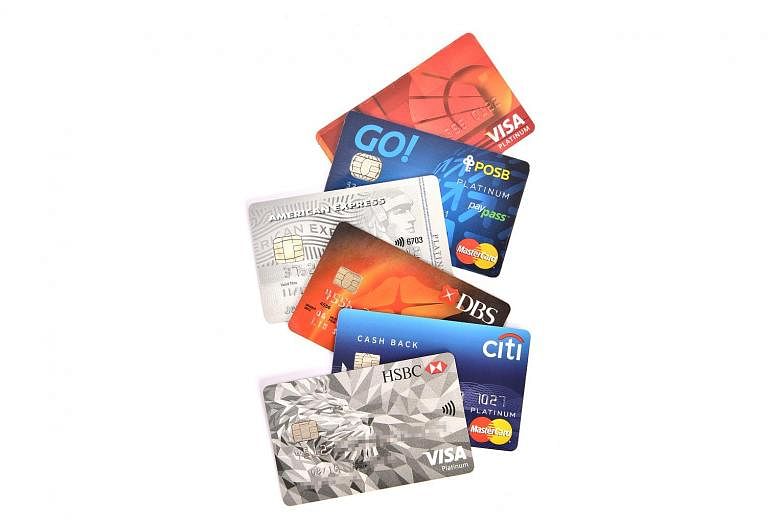The growing trend towards cashless payment systems could lift local bank profits by up to 9 per cent over the next two years, according to Maybank Kim Eng Research.
Analyst Ng Li Hiang said in a research report yesterday that the higher adoption of such payments would increase credit card use, which would potentially lift bank revenue. If 40 per cent to 70 per cent of expenditure here shifts from cash to cashless payments, bank profits could rise by 3 per cent to 9 per cent between this year and 2019, she said.
"Most payment platforms adopted by retailers are currently linked to consumers' cards and/or bank accounts. Based on Euromonitor data, local banks had a combined 66 per cent share of card payment transactions in 2016," Ms Ng said.
"Our channel checks suggest that the bulk of banks' card fees come from merchant discount rates and net interchange fees."
A merchant discount rate is charged to a business by a bank for providing debit and credit card services, while interchange fees are paid by a merchant whenever a customer uses a credit or debit card at their store.
"If we assume 70 per cent to 90 per cent of banks' card fees in Singapore are related to such fees, we estimate Singapore banks earned between $77 million and $388 million in 2016 (from these fees)," Ms Ng said.
This would reflect a profit margin of between 0.6 per cent and 1.5 per cent. And if 40 per cent to 70 per cent of Singapore's total expenditure were to shift from cash to cashless payments, that would translate to between $70 billion and $123 billion worth of transactions moving from paper to plastic.
"We estimate the potential increase in card fees to be around $421 million to $1.96 billion, with Singapore banks to generate profits of $60 million to $600 million (from these fees)," Ms Ng said.
Assuming a profit margin of 1.2 per cent, the local lenders' net profits could increase by an estimated 3 per cent to 9 per cent, she said.
However, Ms Ng noted that her analysis was based on certain assumptions that could pan out very differently.
For starters, the amount of customer spending that would shift to cashless payments over the next few years may not hit the 40 per cent to 70 per cent assumed for the analysis.
She also noted that her analysis assumes these future cashless payments would be made by cards. "This paper only looks at card fees but potential disruption in the payments space can have wider negative implications for banks. We do not know the shape and form of payment disruptions from emerging fintech/e-commerce competitors."
In fact, "banks' card revenues may shrink should there be mass adoption of cashless payments through bank transfers or banking accounts, which usually do not incur additional charges for merchants and consumers", she said.


